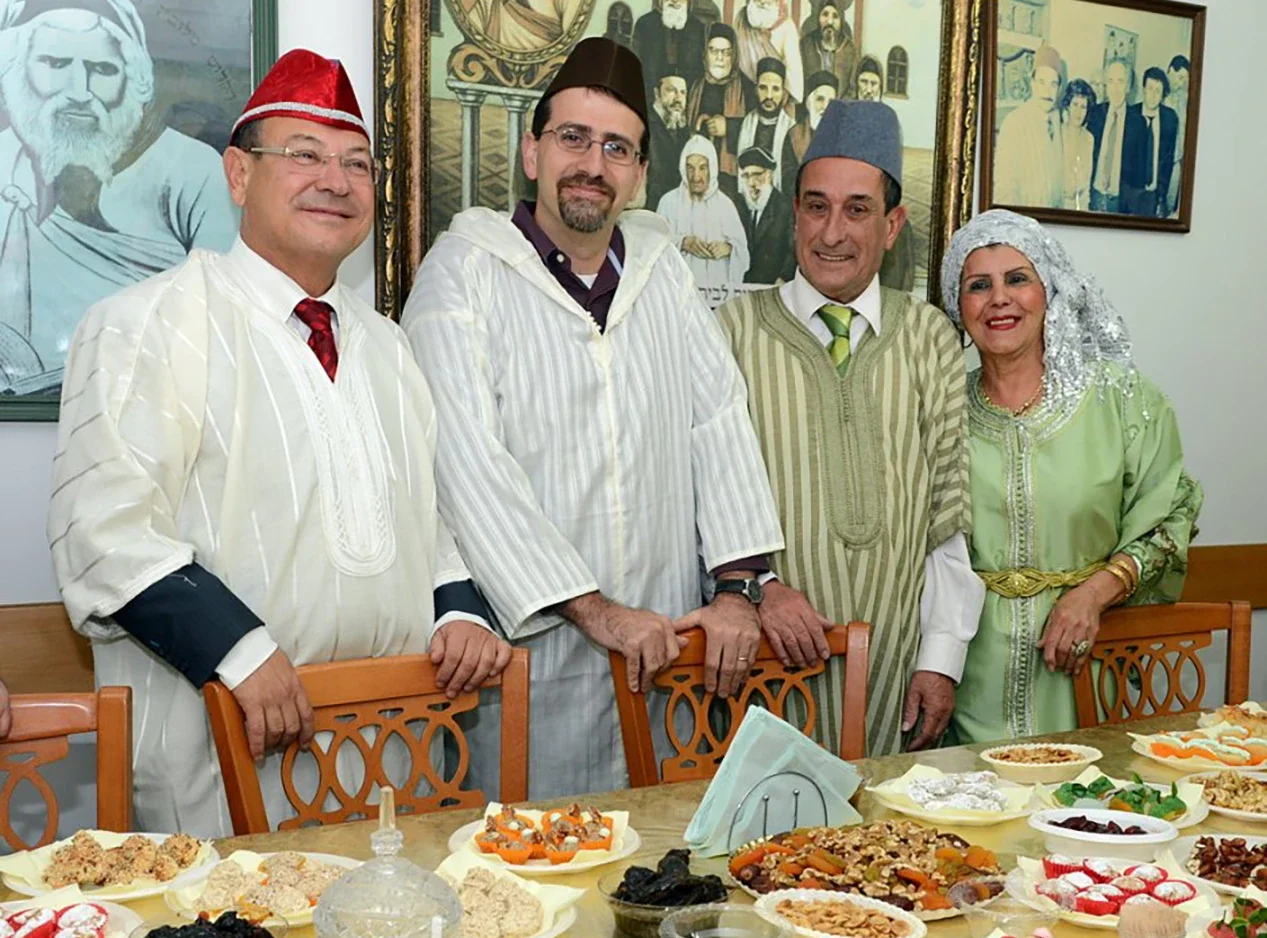Living Jewishly, Singing Globally: Lifecycles and Holidays of Moroccan and Persian Jewish Communities
Living Jewishly, Singing Globally: Lifecycles and Holidays of Moroccan and Persian Jewish Communities

This lesson is an exploration and celebration of the very rich music and culture of the Moroccan and Persian Jewish communities as expressed through some of their lifecycle and holiday practices. It shares the stories and related music from Morocco and Iran of the last century, and contemporary music of Moroccan and Persian Jews.
Through this lesson, learners will understand that:
- All Jewish communities, including the Moroccan and Persian communities, reflect and refract their sociocultural locations, and react to local historical, economic, and political realities, and this is reflected in their music. This remains true for the Moroccan and Persian Jewish communities in the United States today.
- At the same time, all Jewish communities, including the Moroccan and Persian communities, broadly share Jewish religious culture and history, and maintain Jewish values and aspirations.
- Nonetheless, discrete Jewish communities, including the Moroccan and Persian communities, may express their Judaism through different musical genres and modes, sometimes adopting local cultural forms, sometimes expressing themselves in local languages in addition to Hebrew, and sometimes developing practices that are not shared by other Jewish communities.
- Shabbat, holy days and life cycle events have been and remain pivotal institutions that bring families and communities together to connect members to each other, to their cultural and religious heritage, and to God.
- The Moroccan and Persian Jewish cultures make extensive use of piyyutim, and maintain proud musical traditions surrounding them.
- The culture of the Moroccan and Persian Jewish communities, including music, practices, food, language, and more, continue to provide personal enrichment for members of those communities.
- Moroccan and Persian Jewish music today reflects the sociocultural locations in which it is found (often the United States and Israel) and reflects as well an ongoing negotiation, even tension, between honoring the past and thriving in the present.
Learners will listen to the music of Cantor David Abikzer, Cantor Yona Dardashti, Galeet Dardashti, The Oud Sounds, Laura Elkeslassy and many others.
All the while, they’ll ask themselves:
- How do Moroccan and Persian Jewish communities reflect their own separate historical experiences in their music?
- In what ways do Moroccan and Persian communities exemplify the lives and concerns of all Jewish communities?
- How have Moroccan and Persian communities adopted and adapted local culture in expressing their Judaism?
- How do Moroccan and Persian families and communities celebrate Shabbat, holy days, and life cycle moments in ways that are both cross-culturally Jewish and yet reflective of their own experience?
Materials & Resources
-
Lesson Plan
Download
-
Class Presentation
Open
-
Resources for Students & Teachers
Download
-
Student Worksheet
Download
We are deeply grateful to the two people who wrote these lessons:
Lorry Black, DMA, Associate Director, Lowell Milken Center for Music of American Jewish Experience
Rabbi Dr. J.B. Sacks, Educational and Curriculum Specialist, Stories of Music; Rabbi, Congregation Am HaYam (Ventura, CA)
Special thanks to Dr. Samuel Torjman Thomas for his ongoing guidance and support of our writing team.
Our gratitude extends to the pedagogic advisors and reviewers of this lesson:
Mark Kligman, PhD, Mickey Katz Endowed Chair in Jewish Music, UCLA
Dr. Susan Helfter, USC Thornton School of Music
Rabbi Devin Villarreal, Thrive Educational Services
Dr. Samuel Torjman Thomas, City University of New York
Dr. Galeet Dardashti
Rav Hazzan Ken Richmond, Temple Israel of Natick